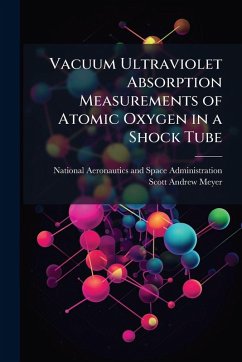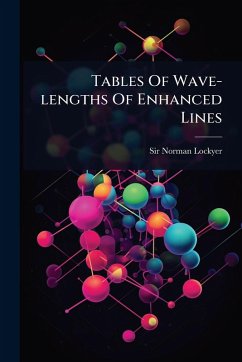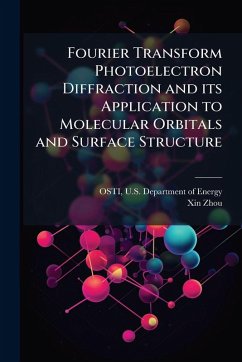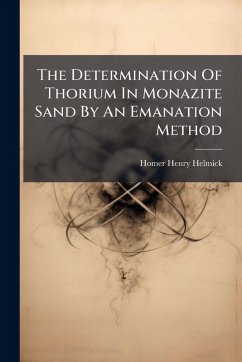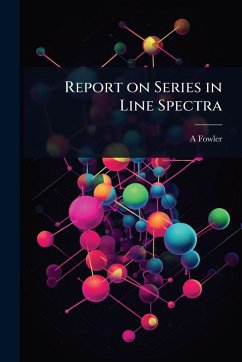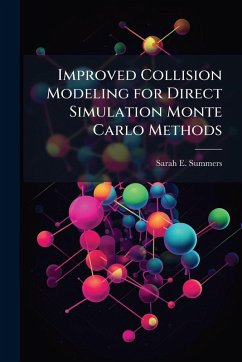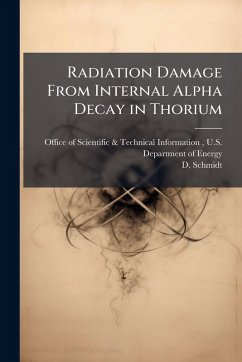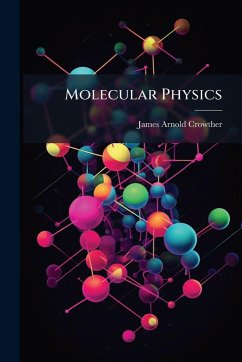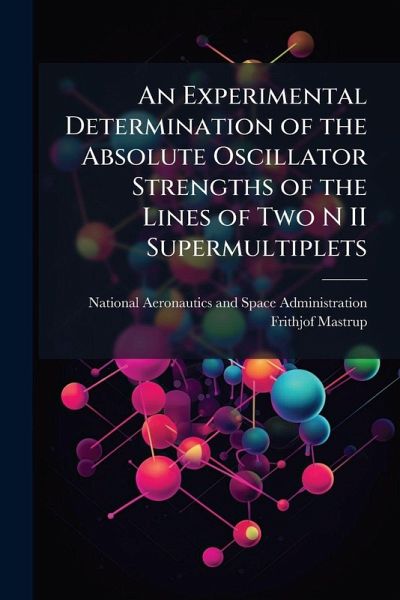
An Experimental Determination of the Absolute Oscillator Strengths of the Lines of Two N II Supermultiplets
Versandkostenfrei!
Versandfertig in über 4 Wochen
14,99 €
inkl. MwSt.
Weitere Ausgaben:

PAYBACK Punkte
7 °P sammeln!
The following work describes the experimental determination of the absolute oscillator strengths of several N II-lines. The light source was the plasma of a wall-stabilized enclosed [cylindrical] arc in pure nitrogen. The parameters of this plasma near the axis of the arc were calculated from the measured total intensity of the hydrogen-like triplet-multiplet of the series 2p3d-2p4f. It was here assumed that the oscillator strengths of this multiplet can be calculated by the Bates and Damgaard Coulomb field approximation. In addition, an attempt was made to check the measured oscillator streng...
The following work describes the experimental determination of the absolute oscillator strengths of several N II-lines. The light source was the plasma of a wall-stabilized enclosed [cylindrical] arc in pure nitrogen. The parameters of this plasma near the axis of the arc were calculated from the measured total intensity of the hydrogen-like triplet-multiplet of the series 2p3d-2p4f. It was here assumed that the oscillator strengths of this multiplet can be calculated by the Bates and Damgaard Coulomb field approximation. In addition, an attempt was made to check the measured oscillator strengths of the N II line in the nitrogen plasma by measurements in a helium-nitrogen mixture, using the known oscillator strengths of helium. This work has been selected by scholars as being culturally important, and is part of the knowledge base of civilization as we know it. This work was reproduced from the original artifact, and remains as true to the original work as possible. Therefore, you will see the original copyright references, library stamps (as most of these works have been housed in our most important libraries around the world), and other notations in the work. This work is in the public domain in the United States of America, and possibly other nations. Within the United States, you may freely copy and distribute this work, as no entity (individual or corporate) has a copyright on the body of the work. As a reproduction of a historical artifact, this work may contain missing or blurred pages, poor pictures, errant marks, etc. Scholars believe, and we concur, that this work is important enough to be preserved, reproduced, and made generally available to the public. We appreciate your support of the preservation process, and thank you for being an important part of keeping this knowledge alive and relevant.



